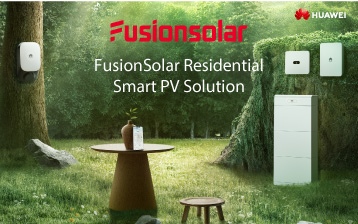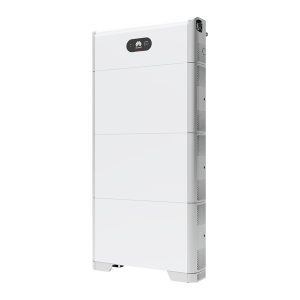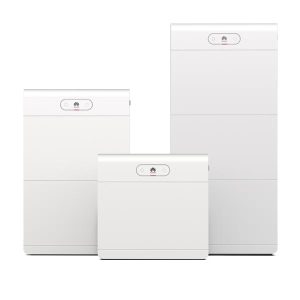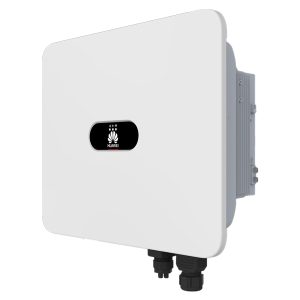Huawei offers a wide range of solutions for residential installations that maximize energy efficiency and the intelligent management of photovoltaic energy.
With a focus on ease of installation and reliability, Huawei FusionSolar products enable the optimal use of photovoltaic systems, reducing energy costs.
With the Huawei L1/M1/MB0 residential inverters, it is possible to pair batteries that reach a capacity of up to 84 kWh per inverter.
Additionally, with accessories like the Backup Box and the SmartGuard, it is possible to implement the EPS function to power essential loads during a grid blackout.
Inverters
Huawei inverters combine elegance and efficiency to deliver high and reliable performances.
With the accessory EMMA it is also possible to integrate the smart management of products like heat pumps. Thanks to this device, in fact, you can turn the heat pumps on or off in case of excess production from the photovoltaic system, using a direct contact controlled by EMMA.
Single-phase inverters
The SUN2000-xKTL-L1 is available in sizes from 2 to 6 kW, all featuring 2 MPPT, allowing even small systems to be installed across 2 roof sections.
With this product, storage capacities of up to 42 kWh can be reached, and it is possible to feature a maximum input current of 12.5A.
Three-phase inverters
The SUN2000-xKTL-M1/MB0 three-phase inverters are Huawei’s hybrid solutions, usable in up to 3 per system (without a string inverter), or alternatively as a single unit for AC-side retrofits.
The M1 series is available in sizes from 3 to 10 kW, with 2 MPPT, and it’s possible to pair up to 42 kWh of storage batteries.
The MB0 series, available in sizes from 12 to 25 kW, features an improved maximum input current compared to the smaller version and can achieve storage capacities of up to 84 kWh per inverter (with a maximum of 100 kWh per system).
Storage
Huawei’s innovative storage systems are characterized by a quick and efficient installation thanks to the Smart Design 2.0.
The batteries are Lithium-Iron-Phosphate. They are available in two versions: 5 kWh or 7 kWh, which cannot coexist in the same system. Up to 3 battery modules can be connected to each BMS.
-
Huawei, Storage Battery
Huawei LUNA2000 – smart string battery – 5/10/15 kWh
Lithium batteries for photovoltaic storage. Modular system with 5 kWh stackable battery packs with 100% discharge capacity.
- Modular design of 5kWh, 10 kWh and 15 kWh and parallelable up to 2 systems for a total of 30 kWh
- 10 year guarantee
- Configurable with Huawei Hybrid Single and Three Phase Inverters
SKU: n/a -
Huawei, Storage Battery
Huawei LUNA2000-7/14/21-S1
Storage system with 6.9 kWh LFP cells, modular solution with the possibility of stacking up to three battery packs per tower with a maximum capacity of 20.7 kWh parallelable up to 4 towers for a total of 82.8 kWh.
Huawei inverter compatible batteries:
- SUN2000-12/15/17/20/25K-MB0
- SUN2000-3/4/5/6/8/10KTL-M1
- SUN2000-2/3/3.68/4/4.6/5/6KTL-L1
SKU: n/a -
Commercial inverter Huawei, Huawei, Huawei, Hybrid inverter, Inverter
Huawei SUN2000 12/15/17/20/25 K-MBO – three-phase hybrid inverter
 Commercial inverter Huawei, Huawei, Huawei, Hybrid inverter, Inverter
Commercial inverter Huawei, Huawei, Huawei, Hybrid inverter, InverterHuawei SUN2000 12/15/17/20/25 K-MBO – three-phase hybrid inverter
Three-phase hybrid SUN2000 12/15/17/20/25 K-MBO inverter ideal for C&I systems, with sizes ranging from 12 to 25 kW
- Efficiency up to 98.2
- Weight and footprint (546 x 460 x 228 mm, weight approx. 21kg)
- IP66 degree of protection
SKU: n/a









